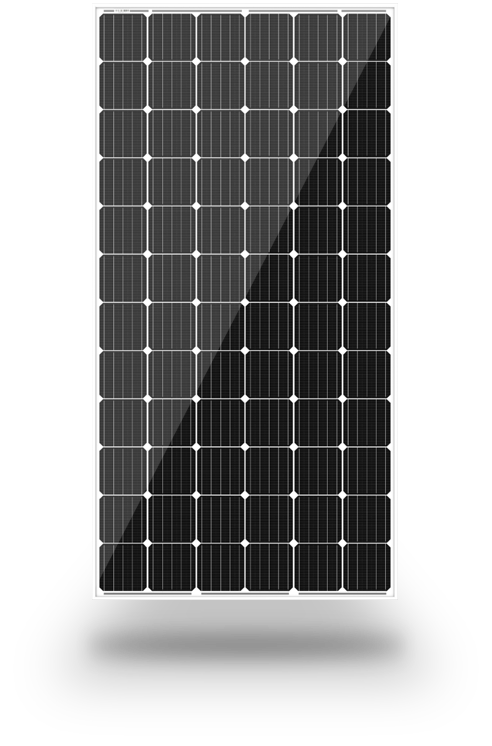Thinking about Sharp solar panels? Here’s what you should know:
Sharp is a Japanese company that was founded in 1912. They have been in the solar game for a long time, researching solar cells since 1959.
Sharp began mass production in 1963 and are a world leader in solar panel production, at one time producing up to 25% of the planet’s solar cells.
Sharp produces both crystalline and “thin-film” modules. The thin-film modules are made with less than 1% of the silicon used in their crystalline lines.
Though the thin-film modules only operate at about a 10% module efficiency, they respond better than crystalline panels to heat.
Sharp also offered an integrated solar solution with its OnEnergy™ system for mounting solar panels on residential roofs.
This system was “low-profile” and looked far less conspicuous than traditional mounting hardware.
Sharp recently changed its tune and began to place a great amount of focus on the company’s SunSnap line of residential solar panels. Much like OnEnergy, SunSnap could more accurately be considered an integrated solar power system rather than a stand-alone solar module.
The system consists of black on black Sharp solar panels, an Enphase microinverter, and a Zep Solar mounting assembly.
First lets take a look at the Enphase microinverter. For those of you who are not familiar with the role of a solar power inverter, this is the device that turns the DC (Direct Current) power from your solar panel into the AC (Alternating Current) that your home runs on.
Normally all of the solar panels on your roof connect to a single inverter, but when you use microinverters it means that each panel gets its own inverter.

As for the Zep mounting assembly, the Sharp solar panels in the SunSnap system are specially designed with the “Zep Groove” to make installation easier. This is a streamlined system that doesn’t require separate grounding hardware like conventional mounting options.
What are the advantages of the SunSnap solar solution?
Appearance is one of the benefits that you will notice first. The aesthetic appeal of the system starts with the black on black Sharp modules. These really blend in nicely with most rooftops.
The system also features a black skirt that covers the tops and bottoms of the solar panels and helps them to blend into your rooftop even more.
Another advantage of the SunSnap system is the reduction in power production losses due to shading. This is due to the fact that a microinverter limits the effects of shading to the panel being shaded (saving the entire system from being affected).
The third benefit of the system is a simplified installation process that allows you to install a few panels at a time. Since each panel is a self-contained unit, you can even install a single panel on your roof and see how you like it. If it works out for you, feel free to install a few more!
Learn more about the SunSnap solar solution in this video:
The following are the specs on some Sharp solar panels:
Note: If you want to know more about what these stats mean check out solar panel info (it will open in a new window so you can go back and forth).
Now, onto the stats…
Rated Power at STC (Standard Test Conditions)
This will be the “advertised” wattage of the panel you’re looking at (e.g. 180 watt or 205 watt).
- Rated Power Tolerance (%)
+10/-5 - Rated Power Per Sq. Ft. (Watts)
ND-130UJF – 12.2
ND-N2ECUF – 11.4
NE-170U1 – 12.1
NT-175U1 – 12.5
ND-176U1Y – 12.4
ND-198U1F – 12.4
ND-216U1F – 12.3
ND-216U2 – 12.3
ND-220U1F – 12.5
ND-220U2 – 12.5
ND-224U1F – 12.8
ND-224U2 – 12.8
ND-V23OA1 – 13.1 - Module Efficiency (%)
ND-130UJF – 13.1
ND-N2ECUF – 12.3
NE-170U1 – 13.1
NT-175U1 – 13.5
ND-176U1Y – 13.3
ND-198U1F – 13.4
ND-216U1F – 13.3
ND-216U2 – 13.3
ND-220U1F – 13.5
ND-220U2 – 13.5
ND-224U1F – 13.7
ND-224U2 – 13.7
ND-V23OA1 – 14.1 - Materials Warranty (Years)
1 - Power Warranty (Years)
25 - Cell Type
ND-130UJF – Multicrystalline
ND-N2ECUF – Multicrystalline
NE-170U1 – Multicrystalline
NT-175U1 – Monocrystalline
ND-176U1Y – Multicrystalline
ND-198U1F – Multicrystalline
ND-216U1F – Multicrystalline
ND-216U2 – Multicrystalline
ND-220U1F – Multicrystalline
ND-220U2 – Multicrystalline
ND-224U1F – Multicrystalline
ND-224U2 – Multicrystalline
ND-V23OA1 – Multicrystalline - Maximum Power Temperature Coefficient (% per °C)
-0.49
